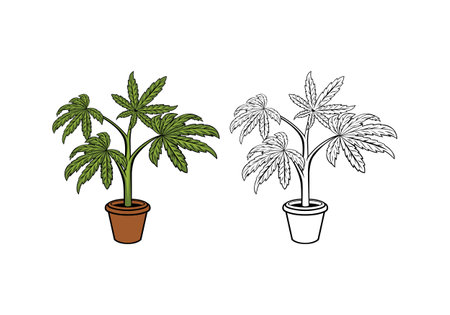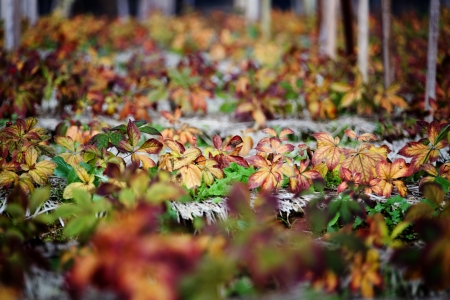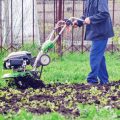1. Understanding the Benefits of Extending Your Growing Season
For many home gardeners across the United States, the traditional growing season can feel too short, especially if you’re eager to enjoy fresh veggies from your backyard for as long as possible. By extending your growing season into late fall using tools like cold frames and row covers, you can make the most out of your garden space and enjoy several unique advantages.
Increased Harvests
When you extend your growing season, you give your plants more time to mature and produce. This often means bigger harvests overall, and less pressure to rush everything in before the first frost. With a little protection from the elements, cool-season crops like spinach, kale, and lettuce can keep producing well after summer ends.
Succession Planting Opportunities
Succession planting is all about staggering your plantings so you always have something ready to harvest. By protecting your garden beds with cold frames or row covers, you can sow new seeds in late summer or early fall. These young plants will thrive under cover even as outdoor temperatures drop, allowing for a continuous supply of fresh produce.
Fresh Produce into Late Fall
Nothing beats the taste of homegrown vegetables straight from your backyard—especially when it’s chilly outside! With extended growing techniques, you can enjoy fresh greens, carrots, radishes, and more well past the typical end of the gardening season. This not only adds variety to your meals but also helps cut down on grocery bills as prices often rise for fresh produce in late fall.
Quick Comparison: Traditional vs. Extended Growing Seasons
| Traditional Season | Extended Season (with Cold Frames/Row Covers) | |
|---|---|---|
| Harvest Period | Spring through early fall | Spring through late fall (sometimes into winter) |
| Types of Crops | Mainly warm-season crops | Adds cool-season crops and overwintering varieties |
| Produce Availability | Loses access after first frost | Keeps producing after frosts start |
| Garden Use | Dormant in cold months | Active longer; better use of space |
Why It Matters for US Gardeners
No matter where you live—from New England to California—extending your growing season lets you make the most of your climate. Whether you’re hoping for more homegrown salads or just want to maximize every square foot of soil before winter hits, using simple methods like cold frames and row covers can help you reach those goals.
2. Getting Started with Cold Frames: Choosing and Setting Up
Understanding Cold Frames: What Are They?
Cold frames are simple, low-to-the-ground garden structures that help protect your plants from early frosts and chilly fall nights. Think of them as mini-greenhouses for your backyard—perfect for extending your growing season into late fall in most American climates.
Types of Cold Frames
You’ll find a variety of cold frames available, each with their own pros and cons. Here’s a quick comparison to help you choose what works best for your needs:
| Type | Description | Pros | Cons |
|---|---|---|---|
| Traditional Wooden Frame | A wooden box with a clear lid (glass or polycarbonate) | Good insulation, easy DIY project, customizable size | Can rot over time, may require maintenance |
| Aluminum/Metal Frame | Lightweight frame with clear plastic or glass top | Durable, weather-resistant, often portable | Less insulating than wood, can get hot quickly on sunny days |
| Plastic Frame Kits | Pre-fabricated kits made from plastic panels and frames | Lightweight, easy to assemble, affordable options | Less sturdy in high winds, may not last as long as wood or metal |
| Bale Cold Frame (DIY) | Sides made of straw bales with a salvaged window on top | Very insulating, inexpensive if you have materials on hand | Bales need replacing yearly, takes up more space |
DIY Cold Frame Ideas for Your Backyard Garden
- Old Windows + Lumber: Use reclaimed windows and some basic lumber to build a frame. This is budget-friendly and eco-conscious.
- PVC Pipe + Plastic Sheeting: Create an arch shape using PVC pipes and cover with heavy-duty plastic for a lightweight cold frame that’s easy to move.
- Bale Cold Frame: Stack straw bales in a rectangle and place an old door or window across the top. Great insulation for colder regions.
Best Locations in Your Yard for a Cold Frame
The right spot makes all the difference when setting up your cold frame. Here’s what to look for:
- Sunlight: Choose a location that gets full sun—ideally south-facing—to maximize warmth during shorter fall days.
- Shelter: Place your cold frame near a wall or hedge to protect it from strong winds but avoid areas where trees or buildings might cast too much shade.
- Drainage: Make sure the ground beneath drains well so excess water doesn’t pool inside.
- Accessibility: Keep it close enough to your house or garden shed for easy access during chilly weather.
Tips for Maximizing Sunlight in American Climates
- Tilt the Lid: Angle the clear top of your cold frame towards the south to catch more sunlight throughout the day.
- Avoid Shady Spots: Watch out for tree shadows that shift as the sun moves lower in the sky during fall.
- Add Insulation at Night: On especially cold nights, cover the lid with blankets or straw mats to hold in heat overnight—and remove them in the morning to let sunlight back in.
- Pile Up Leaves: If frost is forecasted, pile dry leaves around the outside of your cold frame for extra insulation.

3. Row Covers 101: Types, Materials, and Effective Use
What Are Row Covers?
Row covers are lightweight blankets for your garden that help protect your plants from cold, wind, and pests during the fall season. They’re an affordable and simple way to extend your growing season well into late fall in most parts of the US.
Types of Row Covers for Fall Gardening
| Type | Description | Best For |
|---|---|---|
| Lightweight (0.5–0.9 oz/yd²) | Lets in more sunlight and air; offers light frost protection (up to 4°F) | Lettuce, spinach, radishes; southern or milder regions |
| Medium-weight (1.0–1.25 oz/yd²) | Balances warmth and light; protects down to about 28°F | Most greens, root crops; moderate fall chills |
| Heavy-duty (1.5–2.0 oz/yd²) | Maximum frost protection (up to 8°F); less light transmission | Kale, carrots, beets; northern or colder zones |
Choosing the Right Material
The most common material for row covers is spun-bonded polypropylene or polyester. These fabrics are breathable, let rain through, and come in different thicknesses for varying levels of protection. If you need extra durability against wind and frequent handling, look for reinforced edges or grommet holes.
Plastic Row Covers vs. Fabric Row Covers
| Plastic Row Covers | Fabric Row Covers |
|---|---|
| Traps more heat but can cause overheating on sunny days; use with caution and venting Not breathable; best for short-term cold snaps or tunnels |
Breathable; safer for long-term use Provides frost protection while allowing air and moisture exchange |
How to Install Row Covers Securely
- Bend Wire Hoops: Use garden hoops or PVC pipes to create arches over your rows.
- Drape the Cover: Lay the fabric gently over the hoops, leaving slack for plant growth.
- Secur e the Edges: Anchor all sides with soil, landscape staples, rocks, or sandbags to keep out wind and critters.
- Avoid Gaps: Double-check corners and seams so no cold air sneaks in at night.
- Easy Access: For harvesting or watering, loosen one side rather than removing the whole cover.
Troubleshooting Tips
- If wind is strong in your area, use extra anchors like bricks or U-shaped pins every few feet.
- Avoid letting covers touch tender leaves during frosts—use taller hoops if needed.
- If snow is expected, remove heavy snow from covers promptly to prevent tearing.
When to Use Lightweight vs Heavy-Duty Fabrics?
If your fall weather is mild with occasional light frosts, lightweight row covers provide enough warmth without shading your crops too much. In colder states or when early hard freezes threaten, switch to medium- or heavy-duty row covers for stronger insulation. Many American gardeners keep both types handy so they can swap as temperatures drop further into late fall.
4. What to Grow: Best Crops for Late Season Extension
If you want to keep your garden producing well into late fall, choosing the right crops is key. Cold frames and row covers can help many veggies and herbs thrive even when temperatures start to drop. Here’s a look at what grows best with these season-extending techniques across most US regions, along with tips on when to plant and recommended varieties.
Top Vegetables for Late Fall Growing
| Crop | Recommended Varieties | Best Planting Time (US Zones 4-7) | Special Tips |
|---|---|---|---|
| Spinach | Bloomsdale, Space, Giant Winter | Late August to mid-September | Harvest baby leaves or let mature under cover |
| Kale | Winterbor, Red Russian, Lacinato | Mid-July to early September | Becomes sweeter after light frosts |
| Lettuce | Winter Density, Arctic King, Rouge d’Hiver | Late August to mid-September | Choose cold-tolerant butterhead or romaine types |
| Carrots | Nantes, Bolero, Mokum | Late July to early August | Mulch heavily or use row cover for sweet roots all winter |
| Radishes | French Breakfast, Watermelon, Daikon | Early September to late September | Mature quickly; great for last-minute sowings |
| Beets | Bull’s Blood, Detroit Dark Red, Chioggia | Late July to late August | Tops are edible too; protect with row cover as temps drop |
| Bok Choy & Asian Greens | Tatsoi, Komatsuna, Joi Choi Pak Choi | Late August to early September | Sow thickly; harvest young for salads or stir-fries |
| Swiss Chard | Bright Lights, Fordhook Giant, Rhubarb Chard | July to late August for fall crops | Cuts regrow well under protection through light frosts |
| Turnips & Rutabaga | Purple Top White Globe (Turnip), American Purple Top (Rutabaga) | Late July to mid-August (turnips), Early July (rutabaga) | Sow earlier for bigger roots; greens are tasty too! |
Herbs That Thrive Under Cover in Fall
| Herb | Recommended Varieties | Sowing/Transplant Time | Notes |
|---|---|---|---|
| Cilantro | Santo, Slow Bolt | August–early September | Loves cool weather; may overwinter in mild regions |
| Parsley | Moss Curled, Italian Flat Leaf | July–August (direct seed or transplant) | Tolerates frost; harvest into winter with protection |
| Dill | Bouquet, Fernleaf | August–early September | Younger plants handle cold best; great for fall pickling! |
Tried-and-True Planting Tips Across the US:
- Northern States (Zones 4–6): Sow about 2–4 weeks before your first expected frost date. Use double layers of row cover for added warmth.
- Milder Regions (Zones 7+): You can plant later—sometimes into October—and get fresh greens and roots all winter long with basic protection.
- Avoid summer crops like tomatoes or peppers; they won’t survive even with covers once nights get cold.
- If you’re new to season extension, start with spinach and kale—they’re among the easiest and hardiest choices!
- Add straw mulch around root crops inside cold frames for extra insulation in deep winter.
- Select “overwintering” or “cold hardy” labeled seed varieties for best success.
- If possible, stagger plantings every 1–2 weeks in late summer for a continuous harvest into fall.
- If you live in a snowy area, make sure your row covers and cold frames are sturdy enough to withstand the weight.
- Aim for crops that mature quickly so they’re established before daylight hours get too short—growth slows dramatically after late October in most places.
- You can keep harvesting leafy greens by cutting outer leaves and letting the plant regrow under protection.
Your Late Fall Garden Can Be Productive!
The right combination of cold-hardy crops and simple protection lets home gardeners enjoy delicious homegrown food long after most gardens are put to bed. By choosing varieties suited to your local climate and keeping an eye on your planting dates, you’ll be amazed at how much you can harvest well into late fall!
5. Practical Tips for Fall Garden Success
Watering Wisely in Cooler Weather
As temperatures drop, your garden’s watering needs will change. Plants use less water in the fall, but it’s still important to keep the soil slightly moist, especially under cold frames and row covers. Water early in the day so leaves have time to dry before nightfall, which helps prevent disease.
| Weather Condition | Watering Frequency |
|---|---|
| Sunny & Warm (60-70°F) | 2-3 times per week |
| Cool & Cloudy (40-59°F) | Once per week |
| Near Freezing (<40°F) | Only if soil is dry |
Ventilation: Avoid Overheating and Disease
Cold frames and row covers can trap heat on sunny days, even in late fall. Open lids or lift covers during the day when temps climb above 50°F to prevent overheating and promote airflow. Good ventilation keeps humidity down and reduces the risk of mold and mildew.
Frost Protection Strategies
The key to extending your growing season is protecting plants from frost. Cold frames and row covers act as barriers, but for extra chilly nights, try layering lightweight fabric (like old sheets or frost cloth) over your crops. Remove extra layers in the morning when temperatures rise.
| Frost Risk Level | Protection Method | When to Apply/Remove |
|---|---|---|
| Mild (32-36°F) | Row cover only | Apply at dusk, remove mid-morning |
| Moderate (28-31°F) | Row cover + old sheet or blanket | Add extra layer at dusk, remove both in morning once temps are above freezing |
| Severe (<28°F) | Cold frame + row cover inside | Keep closed overnight, ventilate once temps rise above 40°F |
Pest Management in Late Fall Gardens
Pests don’t disappear with cooler weather—slugs, aphids, and rodents may seek shelter under warm covers. Inspect your plants regularly. Hand-pick pests when you see them, and use organic slug bait or diatomaceous earth around plants if needed. Keep debris cleared from inside cold frames to reduce hiding spots.
Quick Reference: Common Fall Pests & Solutions
| Pest Type | What to Look For | Easy Fixes |
|---|---|---|
| Slugs & Snails | Circular holes in leaves, shiny trails on soil/frames | Hand-pick at dusk, sprinkle diatomaceous earth around base of plants |
| Aphids | Tiny green or black bugs on stems/leaves, sticky residue (honeydew) | Spray with water jet or insecticidal soap weekly as needed |
| Mice & Voles | Nibbled roots/seeds, small tunnels near beds/frames | Add hardware cloth below frames, set traps outside garden area if necessary |
Your Fall Garden Checklist for Success:
- Check soil moisture twice a week and adjust watering based on weather.
- Ventilate cold frames and row covers on sunny days to avoid overheating.
- Add layers for frost protection on cold nights and remove them in the morning.
- Scout for pests every few days and take quick action if you spot any issues.
This hands-on approach will help you keep your fall garden healthy and productive all the way into late autumn!


